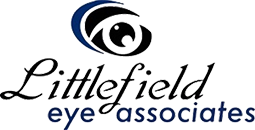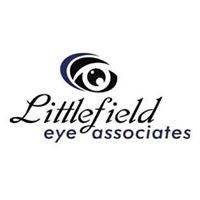Spend enough time with your optometrist, and you may hear about myopia and hyperopia—or, as you might know them, nearsightedness and farsightedness. They’re regularly brought up when discussing the results of an eye exam and are like 2 sides of the same coin, changing how light becomes an image.
Myopia refers to vision where nearby objects are clear, while things in the distance get blurry. Hyperopia keeps those distant objects in focus, while nearby objects are difficult to see. They’re both types of refractive errors, and you can correct them with the right pair of glasses or contact lenses.
How Light Becomes an Image
As one of our bodies’ most important sensory organs, our eyes allow us to take in light and turn it into images that our brains can process. A lot of this comes down to their shape. And this shape is what causes refractive errors such as myopia or hyperopia.
Let’s take a closer look at the shape of the eye. The human eye is typically a spherical structure. The transparent cornea sits at the front of the eye and is responsible for most of the eye’s focusing power.
The lens, located behind the iris, provides the rest of the eye’s power. And finally, the retina is located at the back of the eye and is in charge of converting light into electrical signals that our brain can process. The cornea and lens focus incoming light onto the retina. This process is called refraction.
But what happens if the eye isn’t spherical and light doesn’t land directly on the lens?
What is Myopia?
Myopia occurs when the eyeball is too long, or the cornea is too curved. This causes incoming light to focus in front of the retina instead of directly on it. It’s called nearsightedness because you’re better at seeing things that are near, while far-off objects appear blurry.
Nearly 30% of the population has myopia, and that number’s on the rise. While myopia can affect people of any age, it typically first presents in children, and an optometrist can diagnose it with a comprehensive eye exam. These early diagnoses are vital since myopia can worsen as the eye continues to grow. It typically stabilizes by age 20, but the damage may already be done by then.
While the primary myopia symptom is difficulty seeing distant objects clearly, this can be hard to detect in children who may be unable to put their symptoms into words. You may notice:
- Squinting
- Complaints of eye strain
- Headaches
- The need to sit closer to objects to see them clearly
Children with myopia may also have trouble seeing the board in school and struggle with sports that require keen eyesight. In some cases, vision problems like myopia can be misdiagnosed as ADHD.
What Causes Myopia?
The exact cause of myopia is unknown, but genetics and environmental factors can influence its development. Children whose parents have myopia are more likely to develop the condition themselves. A lack of outdoor time and excessive near-work activities such as reading or using screens for prolonged periods can also increase the risk of developing myopia.
What is Hyperopia?
Let’s take myopia and flip it around so you can see things far away, clear as day, while nearby objects are a blur. That’s farsightedness, also known as hyperopia. This occurs when the eyeball is too short, or the cornea is too flat, causing light rays to refract incorrectly and focus behind the retina.
This abnormal eye shape sets hyperopia apart from another refractive error with similar symptoms, presbyopia, which is due to the eye’s lens aging.
Hyperopia is less common than myopia and tends to get less attention. Though interestingly, most children are farsighted to some extent. Their lenses are simply flexible enough to accommodate this change in focusing power. As they age, their eyes grow longer, and mild hyperopia could be eliminated.
Common vision screenings have trouble detecting hyperopia since farsighted people can still see the chart clearly. A comprehensive eye exam, however, can test near-distance vision. Even though some children outgrow hyperopia, it could lead to a lazy eye if it worsens.
What Causes Hyperopia?
Experts aren’t sure what exactly causes hyperopia to develop or worsen. Genetics is a key part since children are at a greater risk of hyperopia if their parent has it too, but there are likely many factors involved.
Treatments for Myopia & Hyperopia
Glasses or contacts are the most common and effective treatments for myopia and hyperopia. Both solutions directly change how light enters the eyes, one sitting on the nose and the other sitting directly on the eye. The preference is yours!
For adults whose refractive errors have stabilized, laser eye surgery is a popular procedure that uses a laser beam to reshape the cornea, potentially permanently correcting your vision. These days, good candidates have several types of laser surgeries to choose from, including LASIK and PRK.
For kids with myopia, slowing myopia’s progression can greatly impact their future vision. You have so much power at this moment to make a difference! Using personalized management plans, myopia control aims to slow down or halt the progression of myopia in children.
Other Refractive Errors
Astigmatism
Astigmatism is a common refractive error affecting the eye’s ability to focus light evenly onto the retina, leading to blurred or distorted vision. It occurs when the cornea or lens is irregular, causing light rays to focus unevenly. This condition can result in difficulties with both near and distant vision, as well as eye strain and headaches.
Astigmatism can often be corrected with prescription eyeglasses, contact lenses, or refractive surgery, providing clearer vision and improved quality of life.
Presbyopia
Presbyopia is a common age-related condition affecting near vision, typically becoming noticeable around the age of 40. It occurs due to the natural aging process of the eye, leading to a gradual loss of flexibility in the lens. As a result, individuals with presbyopia experience difficulty focusing on close-up objects, such as reading or using a smartphone. Symptoms of presbyopia include blurred vision at close distances, eye strain, and headaches.
Presbyopia is usually managed with reading glasses, bifocals, multifocal contact lenses, or corrective surgery like monovision LASIK.
Bringing Your World Into Focus at Littlefield Eye Associates
The main difference between myopia and hyperopia is the distance a person can see clearly, but both conditions can lead to complications if left untreated.Your eyes change over time, so keep up with your vision by booking your eye exam at Littlefield Eye Associates. Myopia or hyperopia, we’re here to help your family see the beauty the world has to offer.





